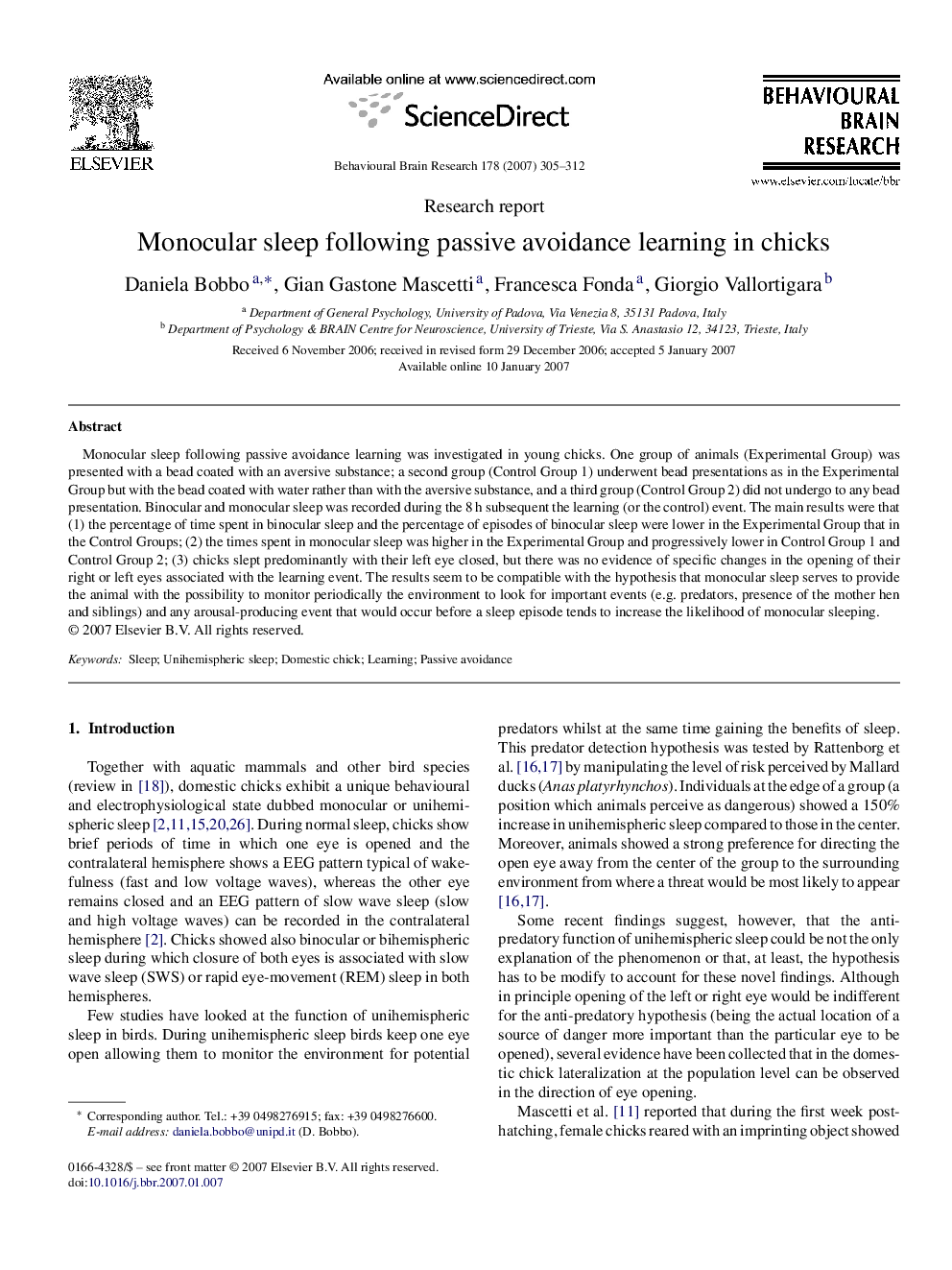| Article ID | Journal | Published Year | Pages | File Type |
|---|---|---|---|---|
| 4315703 | Behavioural Brain Research | 2007 | 8 Pages |
Abstract
Monocular sleep following passive avoidance learning was investigated in young chicks. One group of animals (Experimental Group) was presented with a bead coated with an aversive substance; a second group (Control Group 1) underwent bead presentations as in the Experimental Group but with the bead coated with water rather than with the aversive substance, and a third group (Control Group 2) did not undergo to any bead presentation. Binocular and monocular sleep was recorded during the 8Â h subsequent the learning (or the control) event. The main results were that (1) the percentage of time spent in binocular sleep and the percentage of episodes of binocular sleep were lower in the Experimental Group that in the Control Groups; (2) the times spent in monocular sleep was higher in the Experimental Group and progressively lower in Control Group 1 and Control Group 2; (3) chicks slept predominantly with their left eye closed, but there was no evidence of specific changes in the opening of their right or left eyes associated with the learning event. The results seem to be compatible with the hypothesis that monocular sleep serves to provide the animal with the possibility to monitor periodically the environment to look for important events (e.g. predators, presence of the mother hen and siblings) and any arousal-producing event that would occur before a sleep episode tends to increase the likelihood of monocular sleeping.
Related Topics
Life Sciences
Neuroscience
Behavioral Neuroscience
Authors
Daniela Bobbo, Gian Gastone Mascetti, Francesca Fonda, Giorgio Vallortigara,
